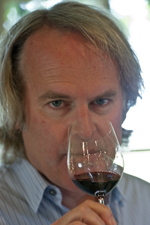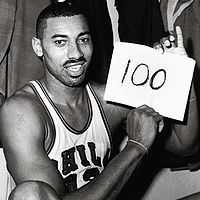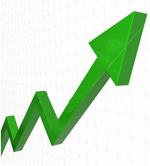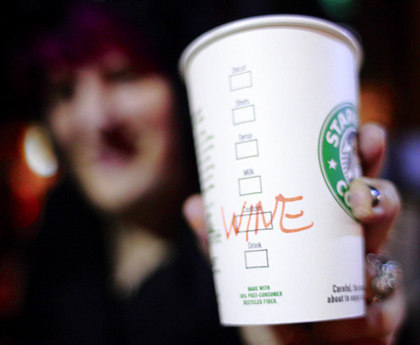Dr Vino's wine blog
wine talk that goes down easy
La Presse: SAQ paid Suckling $24,000 for reviews
 SAQ, the state-owned wine entity that has a monopoly on wine retail in Quebec, paid wine critic James Suckling $24,000 last year. Suckling and SAQ had both denied any financial relationship.
SAQ, the state-owned wine entity that has a monopoly on wine retail in Quebec, paid wine critic James Suckling $24,000 last year. Suckling and SAQ had both denied any financial relationship.
La Presse reports in their online edition that they obtained documents through freedom of information law. The documents reveal that the SAQ paid Suckling $18,000 directly and bought 119 subscriptions totaling $5,950 to his website, which offers wine reviews to members only.
Suckling, the former Wine Spectator critic and European bureau chief, went to Montreal in early 2011 to taste wines and produce tasting notes that would appear both on his website and on that of the SAQ, he wrote at the time. La Presse reports that when Suckling was in Montreal the SAQ had stated “Mr. Suckling was not compensated to do the tastings.” Suckling, for his part, had blogged, “There is no financial relationship. It’s a sharing of information and contacts.” The documents obtained by La Presse state that Suckling was paid for “the tasting and scoring of products, the production, the creation, and putting the brief videos live.”
The SAQ spokesman told contributor the story’s author, Karyne Duplessis Piché, that the purchase of subscriptions was not unusual for the organization. This year, they have spent $26,000 on subscriptions to wine newsletters, the spokesman said.
James Suckling did not immediately respond to a request for comment.
Image: PR Web
Do wine writers write only for the one percent?
Gawker ran a piece recently that rips into the idea that the “one percent” don’t have enough money to live on. What provoked it was a Canadian one percenter who wrote in Toronto Life about his plight, and details his living expenses and several others posed for the magazine and detailed their expenses. One line item that caught my eye–as well as those of numerous commenters at Gawker–was that a one percenter admitted to spending $800 a month on wine. Assuming a bottle every evening, that works out to $26 per bottle, or adding them all up, about $10,000 a year. Granted, this one percenter lives in Toronto so he has to buy his wine at the LCBO, which has higher prices than in the US.
Still, it does raise a question or two about wine writing: how often do wine columns recommend wines north of $26? Assuming the answer is pretty often, then are wine columnists writing for the one percent? (In fairness, Canada’s threshold for inclusion in the one percent is only about half what it is in the US and we’re extrapolating this all from one single guy’s spending on wine.)
Certainly some columns, such as the current Wall Street Journal’s, might be more openly trying to target the one percent than others. Still, a lot more than one percent of wine recommendations are north of $26 a bottle (and still a lot above $52, if we use that as the American one-percenter wine threshold) even wine writers aren’t consciously targeting the “one percent” reader. While it’s true that a reader can pick and choose from a list of recommendations, it’s still worth bearing in mind that if a reader were to have a $15 bottle of wine every other night, the total spend on wine a year would be $2,730, a significant figure for most household budgets. (Clearly, a $30 bottle every other night would be $5,460 and every night would be $10,920, etc.) While we wine writers often delight in wines from specific places, as opposed to “brands” that can source from multiple vineyards or even wine regions, we should strive to highlight those elusive wine picks, the singular bottles at reasonable prices. Then we would be doing our small part for decoupling “wine” from “snob” in America.
Related: “Why so few tasty American wines under $12? Wine importer Bobby Kacher”
“
The experts strike back?
There’s something of a cottage industry that has emerged in trashing the reputation of wine experts. Richard Quandt of Princeton wrote an hilarious essay entitled “On Wine Bullshit.” Bob Hodgson had his two devastating papers about wine competitions. The Wine Trials books suggest high-volume, low-priced wines are all that you’ll ever need. The WSJ got in on the action too a while back.
So at some point, someone had to ride to the rescue of the experts, right? Well, now we have it: a new study suggests that “wine experts” can discern more flavors than regular Joes. Yay, experts, right? Well, not really, the authors say:
“What we found is that the fundamental taste ability of an expert is different,” said John Hayes, assistant professor, food science, and director of Penn State’s sensory evaluation center. “And, if an expert’s ability to taste is different from the rest of us, should we be listening to their recommendations?”
Oh noes! We’re back to the wine-experts-as-useless line! Granted, there’s a lot of pretension and bluster worth bashing but let’s not throw the Burgundy out with the bathwater.
Looking at the details of the study published in the American Journal of Enology and Viticulture, the authors had volunteers identify themselves as wine experts or not. Fully a third of them were classified as “experts,” which seems not quite a representative sample of America (or perhaps Canada, where the data collection occurred.) Moreover, these self-selected experts showed a higher rate of detected the bitter compound, PROP, thus possibly making them “super-tasters.” As Mike Steinberger pointed out in his lengthy (self-)exploration of the physiology of taste, having a sensitivity to PROP does not make one a supertaster and being a supertaster does not make more of a wine expert. (As we’ve seen, blind tasting can have more bitter outcomes than PROP.)
So, yes, there may be biological differences in tasting ability. But in this nature-versus-nurture discussion, I vote for nurture as being more influential: it’s the catalogue of knowledge and tasting references, the experiences with wines in the glass, that make most of the great tasters I know really good. Also, many wine experts are self-styled and have varying capabilities, so I am skeptical there’s a genetic explanation for superior wine tasting ability. And what about the disconnect Hayes suggests between the masses not picking up on tasting note descriptors? Well, for some notes, there may be more than a whiff of what Quandt was talking about.
Who invented wine’s 100-point scale?
 We quite often talk about the 100-point scale and its impact on wine, but is it correct to say that Robert Parker “invented” it? He certainly popularized the approach and it has come to be large part of his legacy as other magazines shifted to the numerical system.
We quite often talk about the 100-point scale and its impact on wine, but is it correct to say that Robert Parker “invented” it? He certainly popularized the approach and it has come to be large part of his legacy as other magazines shifted to the numerical system.
In “The Emperor of Wine,” Elin McCoy writes that Parker and his friend Victor Morgenroth tried various systems of rating and evaluating wines in their (blind) tasting group in the mid-seventies. They tried letter grades from A to F as well as the UC Davis 20-point scale, which had already brought numerical ratings to wine with the gravitas of an institution. McCoy continues that “one of the men–Parker isn’t sure who–came up with the 100-point idea, which was really a 50-to-100 point scale…” (For international readers, the scale follows the system that we have in American schooling for most tests.) McCoy says that Parker and Morgenroth thought that the system was “much less likely to result in the inflated wine ratings they saw all around them.” Ironically, score inflation is the most likely threat to the 100-point system today.
Back on a thread in 2009, a commenter flagged Dan Murphy, an Australian, as pioneering a 100 point system. The retailer that bears his name today describes Murphy’s 100-point system as predating Parker’s use. Another commenter on the thread, Claude Kolm, relayed that in Maynard Amerine and Maynard Joslyn’s Table Wines (1970 edition) they discuss various scoring systems including a 50-point, 100-point and even a 200-point system.
Just for laffs, here are a few tasting notes and scores from one of first issues of the Wine Advocate: “a terrible wine…very thin and acidic with a dull, dumb bouquet and taste. A poorly made wine that should be avoided” (55 points). And another one: “atrocious wine devoid of any redeeming social value” (50 points). Care to guess which they were?
The Internet has “shrouded [wine] in ignorance”
“The Internet has changed the way we think about wine. Once shrouded in mystery, it’s now shrouded in ignorance.”
That’s in the latest post from Hosemaster of Wine. Needless to say, I think it has been a huge net (pun intended) positive, since increasingly knowledgable consumers posting online is one of the most exciting things about the wine world today. BS be gone! But click through for context; it’s funny.
Some weekend reading – PARKENSTEIN!
In a series of post that will go directly into the Wine Blogging Hall of Fame, check out the return of the Hosemaster of Wine and his three-part series, PARKENSTEIN!
In the first installment, Parkenstein assembles his creation: “the more power I accumulated, the more I felt this feverish desire to transfer it to another being, to give power to a cipher of my own creation.” In the second, the creation is animated “the monster’s speech was made up of grunts and snorts and slurping sounds. I had succeeded beyond my wildest dreams—he already spoke like a critic.”
And in the rousing final installment, the creation wanders the earth…which only is big enough for either the creator or the creation.
Mary Shelley would be proud–if she were a wine geek. Hopefully there will be Young Parkensteen!
Points for all? Recent evidence of wine score inflation
 Is inflation crippling wine scores? In the near future, will it take a wheelbarrow of points to sell a Moscato? Let’s hope Ben Bernanke–or, eegad, Paul Volcker!–doesn’t read this post or he might take the punch bowl away. To the recent evidence:
Is inflation crippling wine scores? In the near future, will it take a wheelbarrow of points to sell a Moscato? Let’s hope Ben Bernanke–or, eegad, Paul Volcker!–doesn’t read this post or he might take the punch bowl away. To the recent evidence:
First, the Wine Advocate’s recent reviews of 1,061 “new releases from Napa Valley” came out. I haven’t crunched the numbers but Blake Gray did and found that new critic Antonio Galloni’s “midpoint” (not sure if this is the mean or median) was 92, up from 91 for Parker’s last set of reviews. Fully 123 of the wines received 95 or more points.
Second, an importer wrote this to me via email last month:
The dollars and points are obviously directly related but so is the timing. 90 means nothing today unless it’s under $10 really. 91 and 92 are no mans land. The difference btwn 93 and 94 at the $35 price point is also another important barrier causing significant sales swings (when it is 94). But the points are only valid for the issue in question. Once that issue disappears subsequent vintages of a wine that got a higher rating won’t cause sales.
Third, this recently appeared in retailer Daniel Posner’s daily blast from Grapes the Wine Company:
Every time I turn around, another 2007 Barolo is getting 96 points or higher. Sales sheets have been coming my way with loads of offerings and the points are nearly always the same. 96 points…96 points…97 points, and then, perish the thought, they try to sell me a 94 pointer! I mean really. Who is buying 94 point wine these days. 94 points is for chumps…losers…people that don’t really love Barolo. Because if you love Barolo, you are buying 96 points and up…
Leave the 94 pointers for the people that like Napa Cabs…
And the 90 pointers…White Zin drinkers drink 90 point wine!
Gawker, Starbucks, stinky Brett, sequences – sipped and spit
SIPPED: imitation as flattery?
From the coffee threatdown files: Starbucks will extend its wine bar concept with up to seven locations in Chicago. Make it a venti vino? [SeattleTimes]
SPIT: stinky reporting
A microbial enologist laments the lack of rigor in Decanter and Wine Spectator’s recent reporting of sequencing the genome of Brettanomyces, a cause of feral, animale aromas often considered a flaw. She says that while sequencing is an accomplishment and helpful, but “by no means guarantees a solution to winery brett problems.” [wineoscope]
ANNOUNCED: sequences
Speaking of sequencing, David Schildknecht hit the airwaves to say that Parker told him almost a year ago that Miller was retiring at the end of 2011. [Jim’s Loire]
GAWKERIZED: Recent personnel changes at Robert Parker’s Wine Advocate make Gawker, in typically colorful style.




